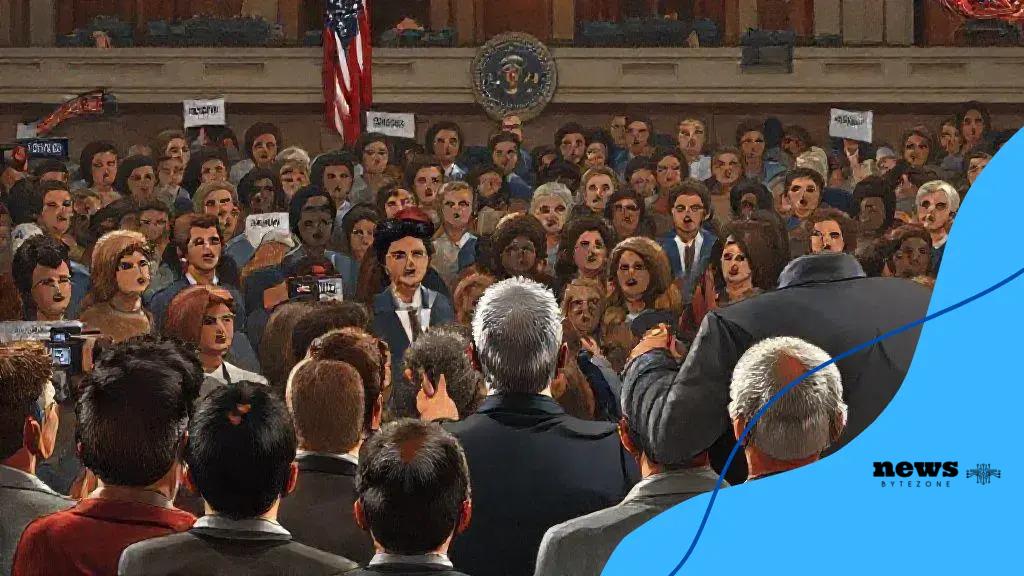The role of technology in speech delivery has evolved significantly, enabling broader audience engagement through live broadcasts, social media, and multimedia, enhancing the impact of presidential addresses.
WhiteHouseSpeech has the power to shape the nation’s views and policy direction. Have you ever wondered how these words resonate in everyday life? Let’s dive into the world of presidential addresses.
Understanding the significance of presidential speeches
Presidential speeches hold significant power in shaping national perspectives and policies. These addresses not only inform the public but also serve as a tool for leaders to connect with citizens. Understanding the significance of these speeches helps us recognize their impact on society.
The Role of Speeches in Government
Presidential speeches are more than just words; they are a reflection of the administration’s values and goals. When presidents take the stage, they often address critical issues that resonate with the public. This is where the significance of presidential speeches becomes evident.
Key Elements of Effective Speeches
To effectively convey their message, presidents often include:
- Emotional appeal: Engaging stories to connect with the audience.
- Clear messaging: Direct and straightforward language that is easy to understand.
- Repetition: Emphasizing crucial points to ensure they are memorable.
By utilizing these elements, presidents can articulate their vision and motivate the public. It’s interesting to note how different administrations adopt varied styles, reflecting their approaches to leadership.
Impact on Policy and Public Opinion
The significance of presidential speeches extends into policy-making. A well-delivered address can rally support for proposed legislation or shift public opinion on critical topics. Observing how speeches influence events can provide insights into their power. For instance, after a notable speech, we often see spikes in public approval ratings, highlighting the direct connection between speech content and audience reaction.
As technology evolves, the reach of these speeches expands. With live broadcasts and social media, presidents now communicate directly and instantly with the public. This accessibility enhances the impact of their messages, making it paramount for leaders to deliver meaningful content.
Key themes and messages in recent addresses
In recent presidential addresses, several key themes emerge that reflect the current state of the nation. Understanding these themes helps us grasp the leaders’ priorities and how they connect with citizens. Often, these messages resonate deeply and inspire action.
Unity and Togetherness
One prominent theme is the call for unity. Presidents frequently emphasize the importance of coming together as a nation. This message is vital, especially during challenging times. By highlighting shared values, leaders aim to foster a sense of community.
Economic Recovery and Growth
Another significant focus is economic recovery. In many speeches, presidents outline plans for revitalizing the economy. Essential points often include:
- Job creation: Initiatives that encourage business growth.
- Investment in infrastructure: Projects that improve public services and create jobs.
- Support for small businesses: Programs designed to help local entrepreneurs succeed.
This theme speaks to citizens’ concerns about their livelihoods and future. By addressing economic challenges directly, speeches can motivate audiences to support proposed policies.
Social Justice and Equality
Presidential addresses increasingly touch on social justice. Leaders often highlight issues such as racial equality, LGBTQ+ rights, and gender equality. Such topics resonate with many citizens seeking justice and fairness. Furthermore, discussions surrounding climate action show a growing awareness of environmental issues that affect all communities.
In summary, the themes highlighted in presidential speeches play a crucial role in shaping public discourse. By addressing unity, economic recovery, and social justice, these messages aim to reflect the nation’s aspirations and concerns.
How speeches influence public opinion

Speeches play a crucial role in shaping public opinion. When presidents deliver addresses, they have the power to influence how people think and feel about key issues. Understanding this impact is essential, as it reveals how leaders can sway emotions and perspectives through their words.
The Mechanics of Persuasion
Presidential speeches often employ a variety of persuasive techniques. These techniques help to create strong connections with the audience. Some common methods include:
- Emotional storytelling: Sharing personal stories or historical anecdotes that resonate with the audience.
- Rhetorical questions: Asking questions that provoke thought and invite the audience to engage.
- Repetition: Reinforcing key phrases to ensure they stick in the minds of listeners.
These elements work together to move audiences, solidifying the message in their minds.
The Role of Media
The influence of speeches is amplified by media coverage. News outlets often broadcast presidential addresses widely. This exposure plays a significant role in shaping public responses. When speeches go viral, the messages reach even broader audiences through social media and online platforms. This connection between speeches and media can alter public opinion swiftly.
Moreover, the framing of a speech by media can affect how the audience interprets the message. Depending on how a speech is reported, it may be perceived in a positive or negative light. Thus, the interplay between presidential addresses and media coverage is key to understanding their impact.
Real-World Examples
Several speeches have notably shifted public sentiment. For example, a presidential address during a crisis can unite a nation, while a well-timed speech on a controversial issue can spark heated debates. Observing these events helps us see how powerful language can be in influencing public attitudes. Ultimately, the power of speeches lies in their ability to reach hearts and minds, impacting policy and societal change.
Analyzing notable speeches in recent history
Analyzing notable speeches in recent history reveals patterns and themes that resonate with audiences. These speeches often reflect the cultural and political climate of their time. By examining key addresses, we can better understand their impact on society.
Case Study: The 2020 Presidential Address
One notable speech is the 2020 presidential address during the COVID-19 pandemic. This speech aimed to reassure the public and outline responses to the crisis. The president focused on themes of resilience and unity, which were critical during such uncertain times. The use of emotional appeal helped to connect with individuals affected by the pandemic.
Historical Speeches that Shaped America
Looking further back, several historical speeches have left a lasting imprint on American society. For example:
- Martin Luther King Jr.’s “I Have a Dream”: A defining moment in the civil rights movement, this speech called for equality and justice.
- John F. Kennedy’s Inaugural Address: Famous for its inspirational tone and the line “Ask not what your country can do for you…” this speech motivated a generation.
- Barack Obama’s 2008 Victory Speech: After becoming the first African American president, his message of hope and change inspired millions.
These speeches not only reflected the aspirations of their times but also galvanized movements for change. Each address used powerful rhetoric to inspire action.
Recent Influential Addresses
More recently, world leaders have delivered impactful speeches addressing global issues like climate change and social justice. For instance, speeches that highlight the urgency of climate action bring attention to an issue that affects everyone.
As we analyze these notable speeches, we see a common thread: the power of language to inspire, persuade, and mobilize people. The lasting effects of these addresses demonstrate their significance in shaping the future.
The evolving role of technology in speech delivery
The role of technology in speech delivery has evolved dramatically over the years. With advancements in communication tools, speeches are now more impactful and accessible than ever. Understanding this evolution helps us appreciate how technology shapes political discourse.
Traditional vs. Modern Delivery Methods
In the past, speeches were delivered in person to audiences with little behind-the-scenes support. Today, technology has transformed this process. Modern speeches utilize various platforms, including:
- Live broadcasting: Officials can reach millions through television and online streams.
- Social media: Immediate sharing of speeches helps engage younger audiences.
- Multimedia presentations: Incorporating visuals and audio enhances the message.
This shift enables speeches to resonate with diverse groups and generate discussions beyond the initial delivery.
The Impact of Social Media
Social media platforms have revolutionized how speeches are consumed. A few key impacts include:
- Real-time feedback: Audiences can share their reactions instantly.
- Wider reach: Messages can spread globally within minutes.
- Targeted messaging: Leaders can adapt their content to specific demographics.
As a result, technology bridges gaps between leaders and the public. It also allows for greater interaction, making speeches more relevant to current issues.
Future Trends
Looking ahead, speech delivery is likely to continue evolving with emerging technologies. Virtual reality and augmented reality could offer immersive experiences that engage audiences in innovative ways. These advancements promise to make speeches even more impactful.
As technology progresses, its role in shaping how speeches are delivered will remain significant. By embracing new tools, speakers can craft messages that not only inform but also inspire action.
FAQ – Frequently Asked Questions about the Role of Technology in Speech Delivery
How has technology changed the way speeches are delivered?
Technology has introduced live broadcasting, social media, and multimedia presentations, allowing speeches to reach and engage larger audiences.
What role do social media platforms play in speech delivery?
Social media allows for instant sharing and feedback, helping speeches spread rapidly and reach diverse demographics.
What are some effective techniques used in modern presidential speeches?
Effective techniques include emotional storytelling, rhetorical questions, and repetition to reinforce key messages.
What can we expect for the future of speech delivery?
Future trends may include virtual reality and augmented reality to create immersive experiences that enhance audience engagement.


 PresidentialSpeech: Understanding its Impact and Importance
PresidentialSpeech: Understanding its Impact and Importance  GovernmentDebate: Unpacking crucial issues and solutions
GovernmentDebate: Unpacking crucial issues and solutions  Community tensions: exploring their roots and impact
Community tensions: exploring their roots and impact